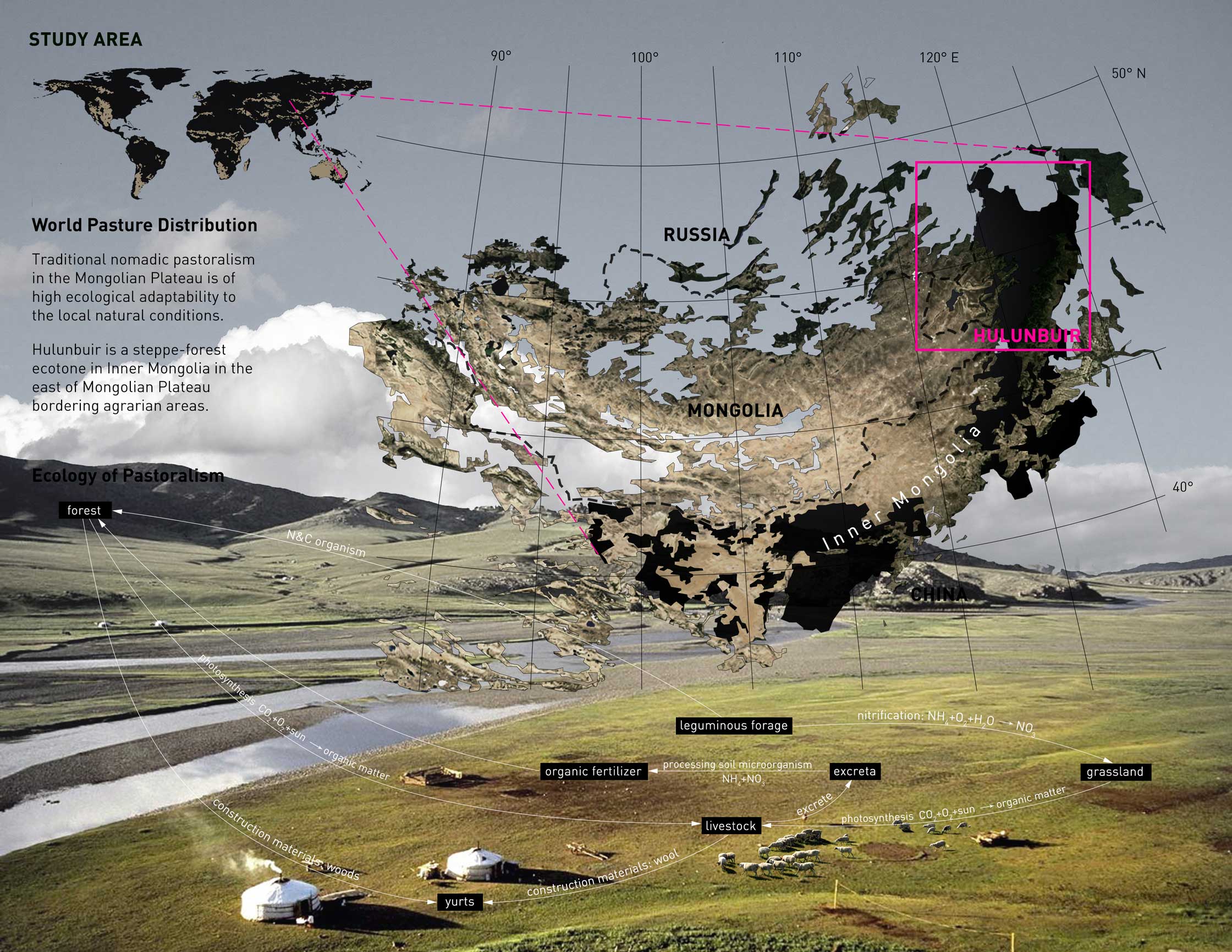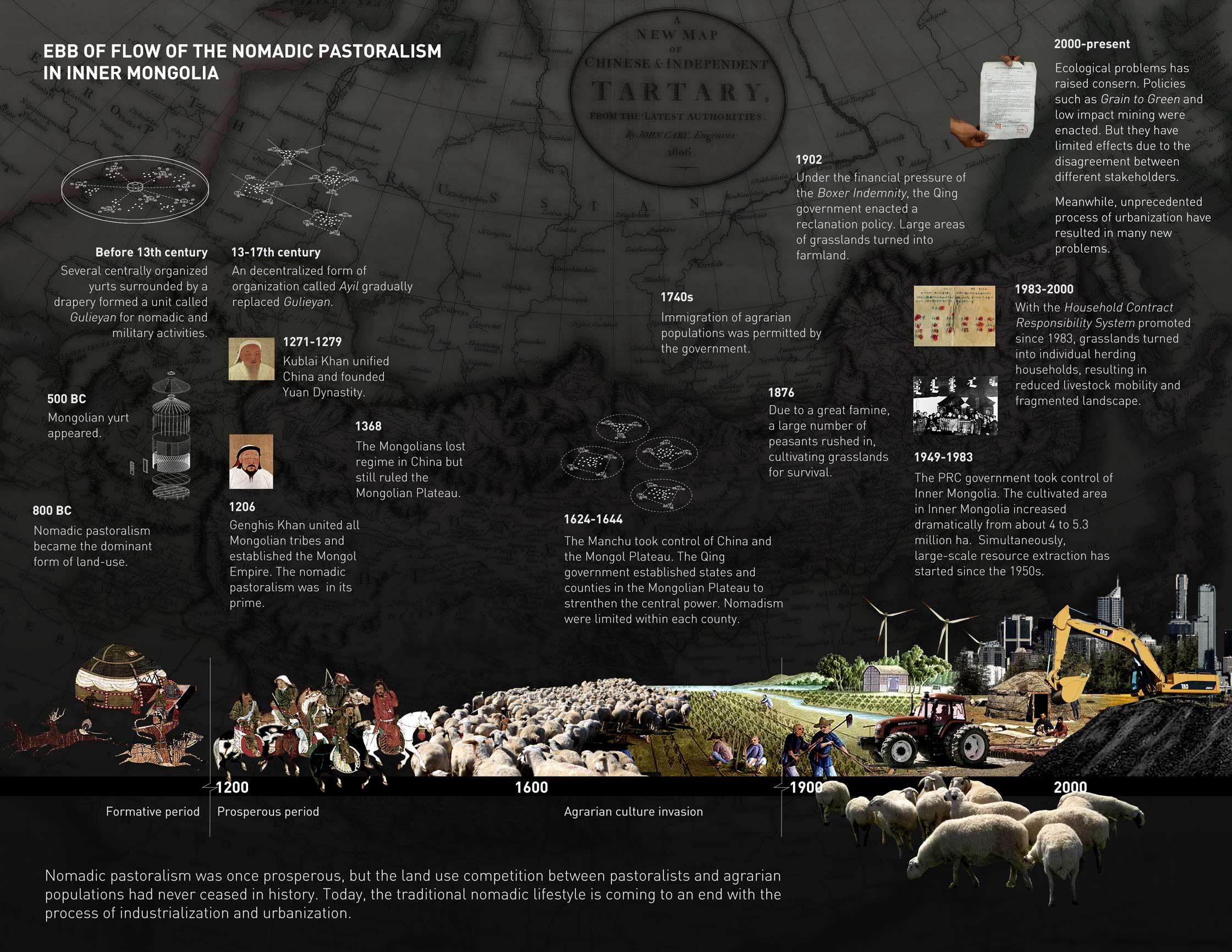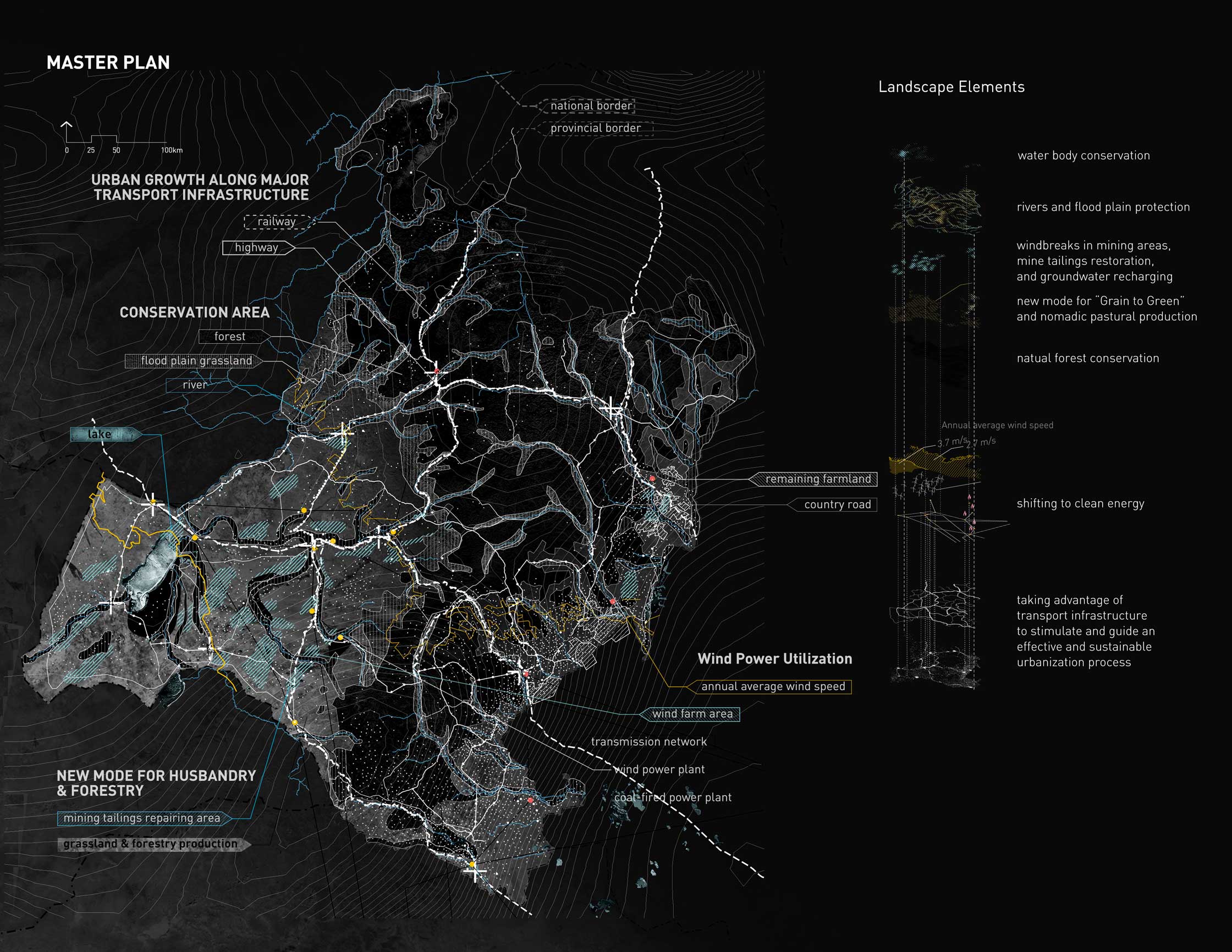The study area is in Hulunbuir, Inner Mongolia, China, a region with extremely diversified forms of landscape and land uses. Based on analysis of dynamic and complex factors influencing the evolutionary process of the region, the landscape is considered and created as an agent-based self-organizing system from bottom up, which is resilient and adaptable to the environment and ever-changing in time. Rather than landscape patterns or configurations, the central focus of the design is the cooperation and flows between the activities from the grassroots, such as grazing, forestry, farming, mining, manufacture, energy generating and urban construction. Rotational Units are proposed as the main strategy rearranging the different forms of land uses to occupy particular patches in a recursive sequence in order to make the once conflicting human activities mutually dependent and contributive. Specific approaches are further explored and proposed for grassland restoration, grass-forest intercropping, mine tailings restoration, water supply improvement, groundwater replenishing and wind energy utilization in some envisioned future scenarios.
项目地址/Location:呼伦贝尔
项目面积/Area:12ha
设计年份/Year: 2017
指导老师/Instructor:Lin Qing
学生/Student:刘京一等
获奖/Award:2017年美国风景园林师协会规划分析类荣誉奖














